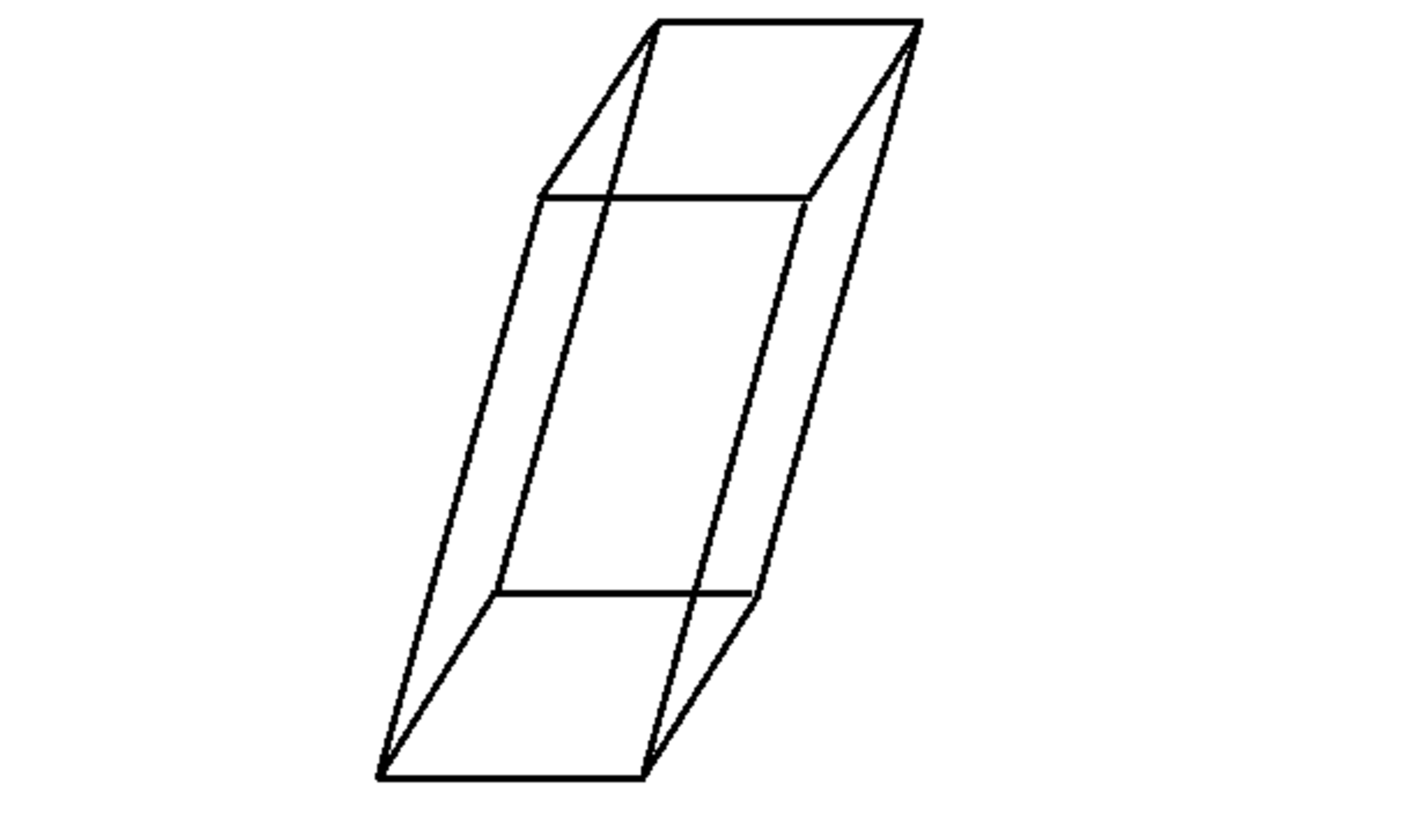Euclidean Geometry #3

A parallelepiped in has 4 non-planar vertices:
What is its volume?
The answer is 3.
This section requires Javascript.
You are seeing this because something didn't load right. We suggest you, (a) try
refreshing the page, (b) enabling javascript if it is disabled on your browser and,
finally, (c)
loading the
non-javascript version of this page
. We're sorry about the hassle.
A B = (1,0,0) - (2,2,2) = (-1,-2,-2);
A C = (0,1,0) - (2,2,2) = (-2,-1,-2);
A D = (1,0,1) - (2,2,2) = (-1,-2,-1);
Volume of the parallepiped = | A B ⋅ ( A C × A D ) | = absolute value of the dot product of A B and the cross product A C × A D = absolute value of the mixed product of A B , A C and A D =
| ∣ ∣ ∣ ∣ ∣ ∣ − 1 − 2 − 1 − 2 − 1 − 2 − 2 − 2 − 1 ∣ ∣ ∣ ∣ ∣ ∣ | = | - 1 - 4 - 8 + 2 + 4 + 4 | = |-3| = 3